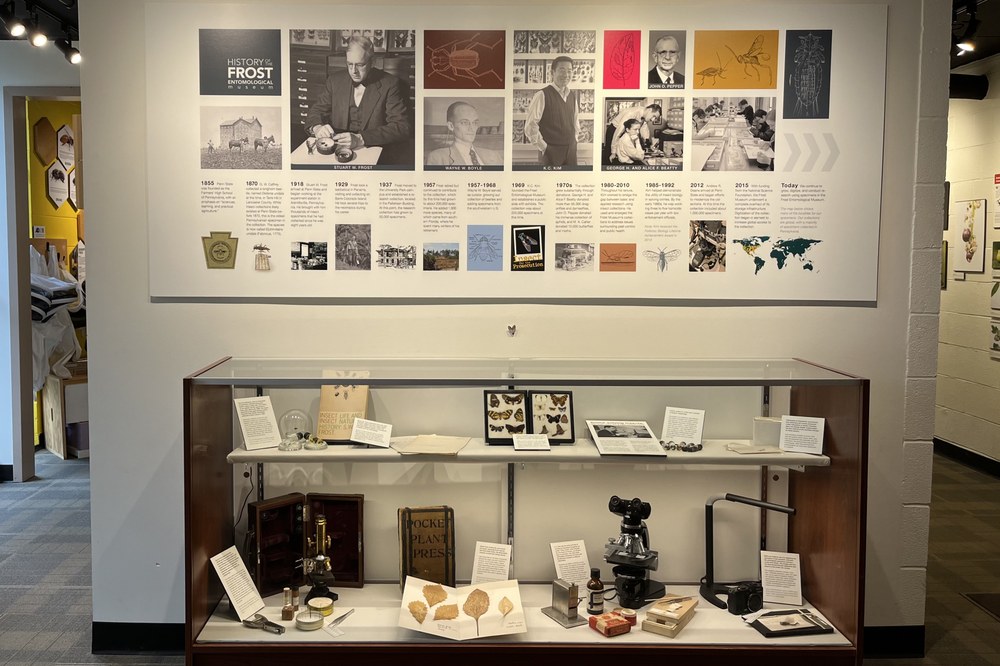Learn about the founding of the museum and its advancement through the years, including the growth of the collection and important contributions made by curators and museum affiliates.

The exhibit in the museum about its history contains a timeline.
1855 - Penn State was founded as the Farmers' High School of Pennsylvania, with an emphasis on “sciences, learning, and practical agriculture”.
1870 - G. W. Caffrey collected a longhorn beetle, named Distenia undata at the time, in Terre Hill in Lancaster County. While insect collections likely existed at Penn State before 1870, this is the oldest Pennsylvanian specimen in the collection. The species is now called Elytrimitatrix undata (Fabricius, 1775).
1918 - Stuart W. Frost arrived at Penn State and began working at the experiment station in Arendtsville, Pennsylvania. He brought with him thousands of insect specimens that he had collected since he was eight years old.
1929 - Frost took a sabbatical in Panama, visiting and collecting on Barro Colorado Island. He took several trips to the neotropics during his career.
1937 - Frost moved to the University Park campus and established a research collection, located in the Patterson Building. At this point, the research collection had grown to 50,000 specimens.
1957 - Frost retired but continued to contribute to the collection, which by this time had grown to about 200,000 specimens. He added 1,500 more species, many of which came from southern Florida, where he spent many winters of his retirement.
1957–1968 - Wayne Boyle served as curator, growing our collection of beetles and adding specimens from the southwestern U.S.
1969 - K. C. Kim founded the Frost Entomological Museum and established a public area with exhibits. The collection was about 225,000 specimens at this time.
1970s - The collection grew substantially through donations. George and Alice Beatty donated more than 65,000 dragonflies and damselflies, John Pepper donated his immense collection of aphids, and M. A. Carter donated 10,000 butterflies and moths.
1985–1992 - Kim helped demonstrate the utility of insect biology in solving crimes. By the early 1990s, he was working three to five homicide cases per year with law enforcement officials. Kim received the Forensic Biology Lifetime Achievement Award in 2014.
1980–2010- Throughout his tenure, Kim worked to bridge the gap between basic and applied research using insect collections. He used and enlarged the Frost Museum’s collections to address issues surrounding pest control and public health.
2012 - Andrew R. Deans arrived at Penn State and began efforts to modernize the collections. At this time the collection included about 1,000,000 specimens.
2015 - With funding from the National Science Foundation (award # DBI-1349356), the Frost Museum underwent a complete overhaul of its storage infrastructure. Digitization of the collection began in earnest to increase global access to the collection.
2021 - With more funding from the National Science Foundation (award # DBI-2039242), the Frost Museum gets more cabinets and a high-density storage system. The aphid and aquatic insect collections were also targeted for digitization and rehousing.
Today - We continue to grow, digitize, and conduct research using specimens in the Frost Entomological Museum.
The Frost Entomological Museum
Hours: Monday-Friday 10am-4pm
The Frost Entomological Museum
Hours: Monday-Friday 10am-4pm

